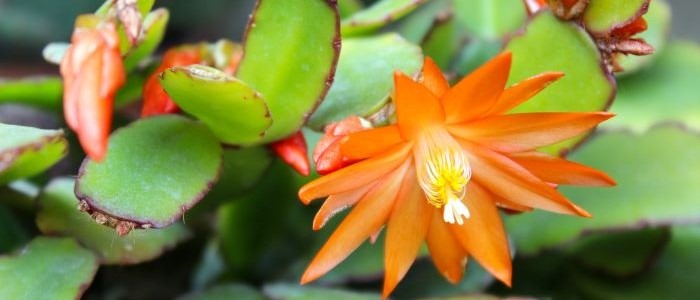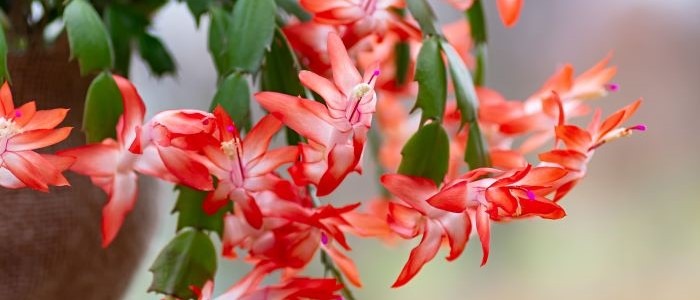The Peanut Cactus Plant (Echinopsis chamaecereus) is an attractive succulent that can add a unique touch to any home or garden. Native to South America, this cactus is often found in arid climates and desert-like regions. It has a very distinctive shape, with its stems growing into a round, ball-like structure and its leaves having a grayish-green hue.
The Peanut Cactus can reach heights of up to four feet when fully grown, and during the summer months it blooms small white flowers that bring life and beauty into any environment. With the right care, this hardy plant can thrive in any setting.
To ensure your Peanut Cactus stays healthy and happy for years to come, you need to make sure it’s planted in the right potting mix, given adequate sunlight and water, fertilized regularly, pruned properly, and monitored for pests or diseases. With just a bit of effort on your part, you can keep your Peanut Cactus Plant growing strong!

The Peanut Cactus Frequently Asked Questions
How do you propagate the peanut cactus?
There are a few methods to propagate the peanut cactus. One way is through stem cuttings. Another method is through division, where you carefully separate the offsets or pups that grow around the base of the main plant. These can be planted in their own pots with well-draining soil and treated like mature plants.
What should I know about growing the peanut cactus?
When it comes to growing the peanut cactus, there are a few key things to keep in mind. Firstly, it thrives in well-draining soil, so make sure to choose a potting mix specifically designed for cacti and succulents. Additionally, providing ample sunlight is crucial for its growth, so placing it near a sunny window or in a well-lit area is ideal. Lastly, be mindful of overwatering, as the peanut cactus prefers dry conditions and can easily succumb to root rot if left sitting in wet soil.
Choosing a Pot for Your Peanut Cactus Plant
When it comes to choosing the right pot for your Peanut Cactus, there are several factors to consider. The pot should have drainage holes to ensure that the plant is not sitting in water, and should be slightly bigger than the root ball of the plant to accommodate future growth. Glazed or unglazed ceramic pots work best as they allow the soil to dry out quickly. Additionally, make sure there is a few inches of clearance between the rim of the pot and the soil surface, which will help keep the sides of the pot cleaner.
When selecting a pot for your Peanut Cactus, you want one that will both provide adequate space for its growth and fit in with your home décor. If you’re looking for something unique, terracotta or clay pots can add an interesting touch to your room while also providing good drainage and air flow. Plastic pots are lightweight and come in a variety of colors and shapes, making them an ideal choice if you plan on moving your Peanut Cactus around frequently. For those who prefer more traditional options, glazed ceramic pots come in many sizes and can give off a classic feel.
Finally, it’s important to make sure that whatever type of pot you choose has enough clearance between the rim of the pot and soil surface so that you can easily move it without disturbing its roots. It’s also essential that there are drainage holes at least one inch (2 cm) from each other at all times so excess water can escape and prevent root rot or disease buildup from standing water – this is especially important for ceramic pots which tend to hold more moisture than plastic ones.
Choosing a Pot for Your Peanut Cactus may seem like an intimidating task but with proper research into what type of material works best for this particular species along with considering size requirements as well as aesthetic appeal; you’ll have no problem finding a perfect fit! With the right care, your Peanut Cactus Plant will thrive and bring beauty to any home!
Sunlight Requirements for Growing the Peanut Cactus
The Peanut Cactus is an eye-catching, unique plant that requires full sunlight in order to reach its full potential. To provide your plant with the sunlight it needs, place it near a south-facing window for optimal sun exposure. If you’re growing the Peanut Cactus indoors, find a bright window or use an artificial light source. If you have the option of growing this cactus outdoors, make sure to select a spot that gets no less than 6 hours of direct sunlight every day.
When setting up your planter, be sure to consider the space available and how much light will be able to reach the plant. During spring and summer months, make sure that the Peanut Cactus gets as much sun as possible; however, during fall and winter months when natural light is scarce, you may need to supplement with an artificial light source such as fluorescent lamps or LED bulbs. Additionally, make sure that there are no curtains or other objects blocking the sun from reaching it directly.
It’s important to remember that too much sun can also be damaging for your cactus – if you notice signs of wilting or browning of leaves on your plant, move it away from direct sunlight and monitor its progress over time. With just enough sunlight and proper care, your Peanut Cactus Plant can thrive and bring beauty to any home.
Water and Soil Needs for the Peanut Cactus
The Peanut Cactus Plant is a beautiful addition to any home, but it requires special care in order to reach its full potential. The soil should be well-draining and airy – cacti or succulent potting mix with perlite or pumice added for better drainage can work well. Water tepidly when the soil has dried out slightly, being sure not to leave standing water behind after watering. During spring and summer months fertilizing at least once every few weeks will help your plant grow strong and healthy.
Make sure to provide at least six hours of direct sunlight daily, or bright indirect light if direct sunlight is not available. Additionally, keep an eye out for common pests such as mealybugs or spider mites which could cause damage if left unchecked, and prune regularly to encourage new growth. With the right care and attention, you’ll have a lush Peanut Cactus Plant that brings beauty into your home!
Fertilizing and Pruning the Peanut Cactus Plant
Fertilizing and pruning the Peanut Cactus Plant is essential to keeping it healthy and thriving. It is important to fertilize the plant once every three months with a balanced, water-soluble fertilizer. Be sure not to over-fertilize as this can burn the plant’s roots and cause it to become weak or even die. When pruning, take care to use sharp, clean tools. Prune during the spring or fall when actively growing, removing dead or damaged parts of the plant in order to encourage new growth, but no more than one-third of total stems should be trimmed away.
After pruning, allow cuts to dry before watering so that no bacteria can enter them and cause disease. In addition, proper research should be done beforehand in order to determine which species of Peanut Cactus Plant you have so that you know what kind of environment it needs for optimal growth and health. This includes its light requirements (full sunlight for at least 6 hours a day) and soil type (a well-draining potting mix with an acidic pH).
Knowing what type of Peanut Cactus Plant you have will also help you identify any potential pests and diseases that could affect your plant if not taken care of properly. Taking time to research how best to care for your particular species will ensure that your Peanut Cactus Plant stays healthy for years to come!
Pests and Diseases Common to the Peanut Cactus Plant
Pests and diseases are common threats for any garden plant, especially the Peanut Cactus Plant. To keep your cactus healthy and looking its best, it’s important to recognize the pests and diseases that can affect it, as well as take steps to prevent them.
Common pests of the Peanut Cactus Plant include aphids, mealybugs, and scale insects. These insects feed on the sap of the plant, weakening it over time if left unchecked. Insecticidal soaps or neem oil are effective ways to control these pests without damaging your plant or harming beneficial insects in your garden. It’s important to inspect your cactus frequently for signs of infestation and take action immediately if any are found.
Fungal diseases such as root rot, leaf spot, and powdery mildew can also be problematic for the Peanut Cactus Plant if not prevented. The key is ensuring good soil drainage so that water does not pool around the roots of the plant; this will help reduce humidity levels which can promote fungal growth. Providing adequate air circulation and light is also essential for preventing fungal diseases from taking hold in your Peanut Cactus Plant.
Overall, with proper care and maintenance you can protect your Peanut Cactus Plant from potential pests and diseases while enjoying its unique beauty in your home or garden. Knowing what threats to look out for will help you identify any issues quickly so you can take action before they become serious problems
Conclusion
In conclusion, the Peanut Cactus Plant is an easy-to-care-for houseplant that will bring a unique charm to any home or garden. While these plants can be low-maintenance, it is important to do your research on its particular species to ensure you understand its environment needs.
To propagate, you can cut off a stem and replant it into soil. Additionally, make sure to provide adequate air circulation and light as well as good soil drainage in order to prevent pests from attacking your plant. If needed, insecticidal soaps or neem oil may be used for pest control.
Above all else, take joy in caring for this one-of-a-kind beauty! With the right care and attention, your Peanut Cactus Plant will surely thrive!
Other House Plants With Orange Flowers












